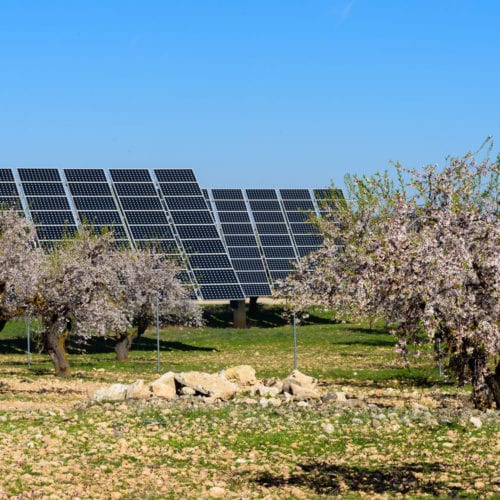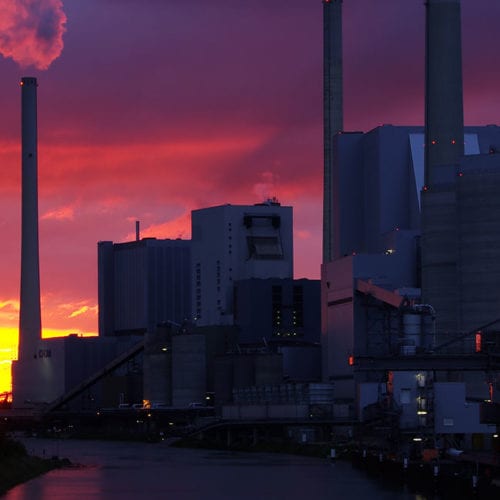
Powering Decarbonization in Illinois: A Cautionary Coal Tale
Coal plants are closing across the United States at an accelerating rate. In fact, from 2011 to mid-2020, utilities shut down 95 gigawatts (GW) of coal capacity, with another 25 GW scheduled to be shut down by 2025. At the end of 2019, the outlook was for 20 more gigawatts to retire from 2021 to 2025. However, in 2020, that number rose to 37 GW for those same years. More and more utilities are coming to the conclusion that the falling cost of clean energy is making it more sensible to invest in renewable energy than to continue operating coal plants.
Just a few months ago, the largest utility in Wisconsin stated that it would retire 1,800 megawatts (MW) of coal and natural gas generation. It is spending $2 billion to invest in 800 MW of solar power, 100 MW of wind power, and 600 MW of battery storage.
Just next door, in Illinois, policymakers are deciding the fate of the 1,600 MW Prairie State Energy Campus (PSEC). Built in 2012 at a cost of $5 billion, PSEC—consisting of two 800 MW coal-fired power stations—is barely economic now. The proposed Illinois Clean Energy Jobs Act (CEJA) legislation could include a mandate to close PSEC by 2030. Some people are arguing that closing the campus before the end of its useful life will increase prices for customers. However, RMI analysis shows that closing PSEC will not negatively impact ratepayers.
Furthermore, if the plant is replaced with renewable energy, battery storage, energy efficiency, and demand flexibility, plant owners will save their customers money. RMI’s recent insight brief, Transition Opportunities for Prairie State Energy Campus, describes how the plant owners of the campus can strategically help manage risk, reduce costs, and replace PSEC services.
A Risky Decision from the Start
When construction of PSEC began in 2007, prices of alternatives, such as natural gas and renewable energy, were much higher. But by the time the plant come online in 2012, it cost $900 million more than expected, and the cost of renewables had fallen so much, utilities were already moving away from coal.
PSEC is owned by six municipal utilities and three electric cooperatives. The plant owners—all nonprofit utilities—signed contracts directly or indirectly committing themselves to paying off the $5 billion price tag to build the campus.
Today, for many of the owners, the outstanding debt is higher than the initial cost share of the campus. This may be because some owners issued additional debt to finance capital improvements. It could also be due to the fact that owners didn’t charge rates that reflected the true costs of operation in the initial years when capacity factors were low. Instead, they assumed the needed revenues would be collected from ratepayers in the future when the plant would run more efficiently.
Options for the Future
RMI’s insight brief lays out two main options for replacing PSEC. Plant owners could close the plant and buy energy and capacity from the markets. Or plant owners could close the plant and invest in a portfolio of clean energy solutions that includes wind, solar, battery storage, demand flexibility, and energy efficiency. RMI analysis found that even before 2030, both options are cheaper than keeping PSEC running and will save customers money. And by 2040, a clean energy portfolio is the most economical.
PSEC Operating Cost Compared with Clean Energy Solutions and Market Purchases
“Coal has been under pressure from lower-cost gas power and renewable energy for more than a decade,” said RMI Manager Kevin Brehm. “Even new coal plants like PSEC will most likely be uneconomic by 2030.”
In fact, refinancing the debt with a ratepayer-backed security could allow plant owners to reinvest in clean energy solutions while saving Illinois ratepayers more than $300 million or the equivalent of more than 0.3¢/kWh.
A Natural Gas Bridge?
Unfortunately, many utilities are proposing replacing coal plants with natural gas. Historically low gas prices (skyrocketing gas prices during the Texas storm notwithstanding) have led many to characterize natural gas as a “bridge fuel” to a clean energy future. Utilities and gas investors expect this bridge to continue long into the future: in mid-2019, planned investment in new gas power plants and pipelines totaled over $100 billion.
However, as RMI has shown, combinations of wind, solar, battery storage, and demand-side management that can provide the same grid services as a gas plant call into question the cost-effectiveness of investment in new gas infrastructure. Just as persistently low natural gas prices have contributed to the early retirement of dozens of coal plants across the United States in the past decade, the declining costs of clean energy are poised to have the same effect on gas-fired generators being proposed for construction today. RMI analysis finds that, by 2035, over 90 percent of proposed combined-cycle gas plants, if built, would be uneconomic to run compared with the cost of building a new clean energy portfolio.
Ensuring a Just Transition
There is a prevalent fear that closing coal and natural gas plants will have negative economic implications including a large loss of jobs. For example, PSEC provides 600 jobs, considerable tax revenue, and other indirect benefits to workers and communities in Southern Illinois. However, according to RMI Principal Uday Varadarajan, “Supportive policies can help ensure workers and ratepayers are protected as coal plants are replaced with cleaner and lower-cost clean energy solutions.”
Supporting workers and communities throughout a plant closure is critical. CEJA already includes components to directly address these issues such as direct support through Clean Energy Empowerment Zones and workforce training through Clean Jobs Workforce Hubs. In fact, researchers at the University of Massachusetts Amherst estimate that investments in renewable energy generate roughly three times more direct and indirect jobs than comparable investments in fossil fuels. And in addition to training and new opportunities in the clean energy economy, there may also be significant jobs associated with plant and mine remediation in the years following retirement.
Proactive Planning
One of the most important lessons to emerge from the RMI analysis is the important of proactively planning for plant closure with appropriate lead time. In this way, Illinois state policymakers and key PSEC stakeholders can help to lessen or eliminate any negative impacts on impacted communities and utilities. This can be accomplished by (1) ensuring energy costs do not increase, (2) decreasing the long-term debt burden, (3) supporting worker and community transitions, and (4) redeveloping the site with renewable energy opportunities.
In other words, being proactive and planning for early retirement of PSEC is key to leveraging the opportunities that exist for all stakeholders—plant owners, ratepayers, and the local community—to maximize the upside of closing the plant.
A Cautionary Tale
The Prairie State Energy Campus is a cautionary tale. Investing in fossil fuel-based electricity does not make economic sense. Closing coal plants and replacing them with lower cost and cleaner alternatives is a win-win-win, for energy stakeholders, consumers, and the environment. To keep the Paris Agreement’s temperature targets within reach, global coal use must decline by 80 percent below 2010 levels by 2030. Replacing PSEC with a clean energy portfolio can bring us one step closer to that goal.

